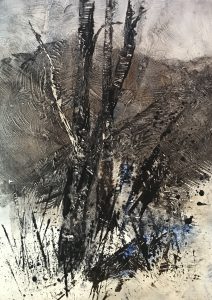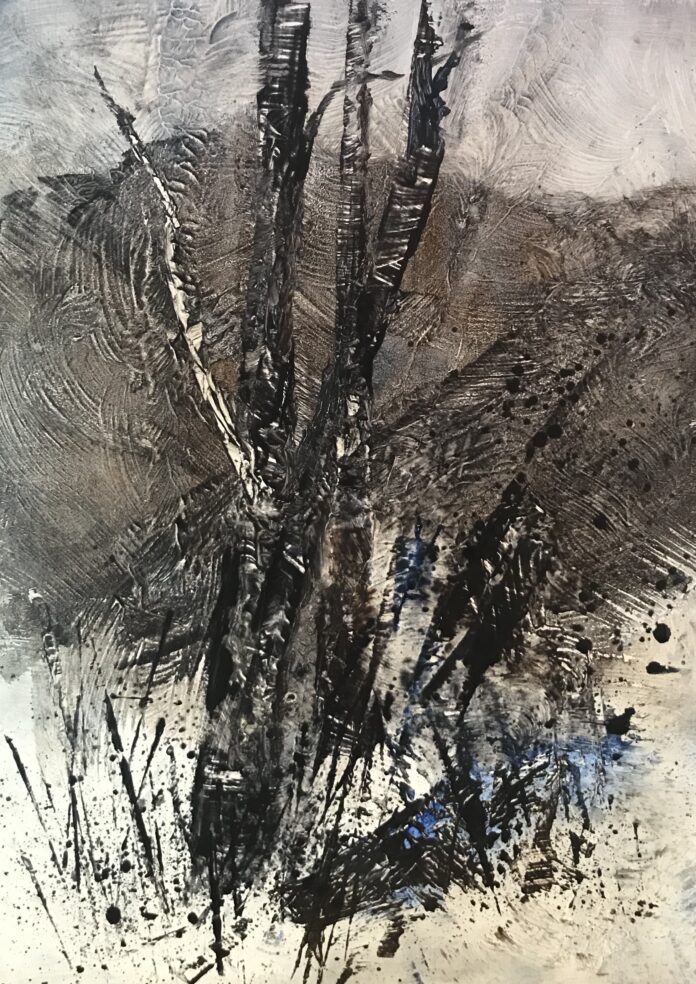BY LESLIE REGO

The first snowfall of the winter season is wondrous. The white of the snow set against the blue sky is an iconic image. To represent this deep blue, I often use Ultramarine Blue paint.
Many years ago the paint was made from lapis lazuli, a stone that was found in a single range of mountains in Afghanistan, or “beyond the sea.” Miners would light fires under the blue seams in the rock to heat the surface. When the surface was very hot, they would throw cold water onto the stones to shock the stones into cracking. Extraction of the lapis lazuli was just one step in the many steps it took to make the stone into paint.
When the gemstone arrived in Europe, along with the technique to turn it into a beautiful blue pigment, the color became a sensation. Since it was such an arduous process to make the pigment, the color was highly prized and reserved for only the most precious areas in a painting, such as the robes of the Virgin Mary.
Once the artist received the lapis lazuli, the stone needed to be pounded with a mortar on a slab. The resulting powder was passed through a sieve, pounded again, and passed through the sieve again. This process was repeated many times until a fine powder was achieved. The next step was equally arduous.
Victoria Finlay, in her book “The Brilliant History of Color in Art,” writes, “Melt pine resin, gum mastic, and wax in with the blue. Strain with a linen cloth, and make a dough. Grease your hands with linseed oil until they are really slippery, and work the dough every day for three days and three nights.”
The ongoing process continues in an arduous preparation: Make a lye solution by pouring water onto ashes. The lye is then added to the dough. With two sticks, one in each hand, knead the dough. When the dough is completely blue, allow it to drain into a bowl. Repeat with more lye and let the dough drain into a new bowl. Continue this procedure until the dough has no more color. Finally, put the bowls into the sun to evaporate the liquid until all that is left is a blue powder. The first bowl will create the most intense powder to be used in the most highly prized areas of a painting and the pale color in the last bowl is applied as a glaze.
Wow! When I read all of this I looked at my tube of Ultramarine Blue with new respect. I just had to go online to order, open the box once it arrived, take out the tube, unscrew the cap and squeeze. This winter day, to show the glory of the snow, I slashed Ultramarine Blue along the snowy ground. The crisp contrast put my blue to good use and brought out the beauty of the snow, allowing the white to glow next to the paint from “beyond the sea.”
Leslie Rego is an Idaho Press Club award-winning columnist, artist and Blaine County resident. To view more of Rego’s art, visit leslierego.com.



